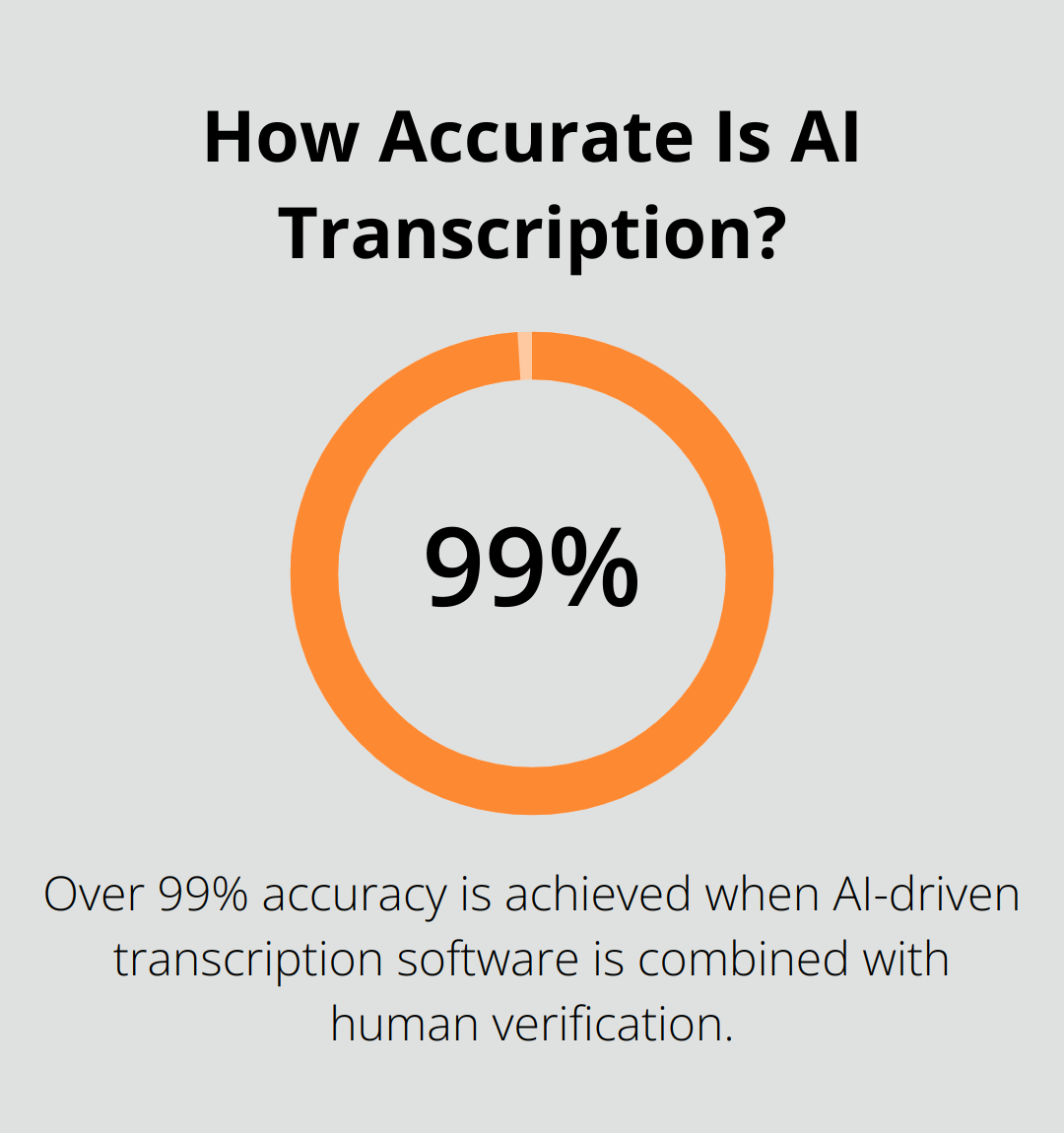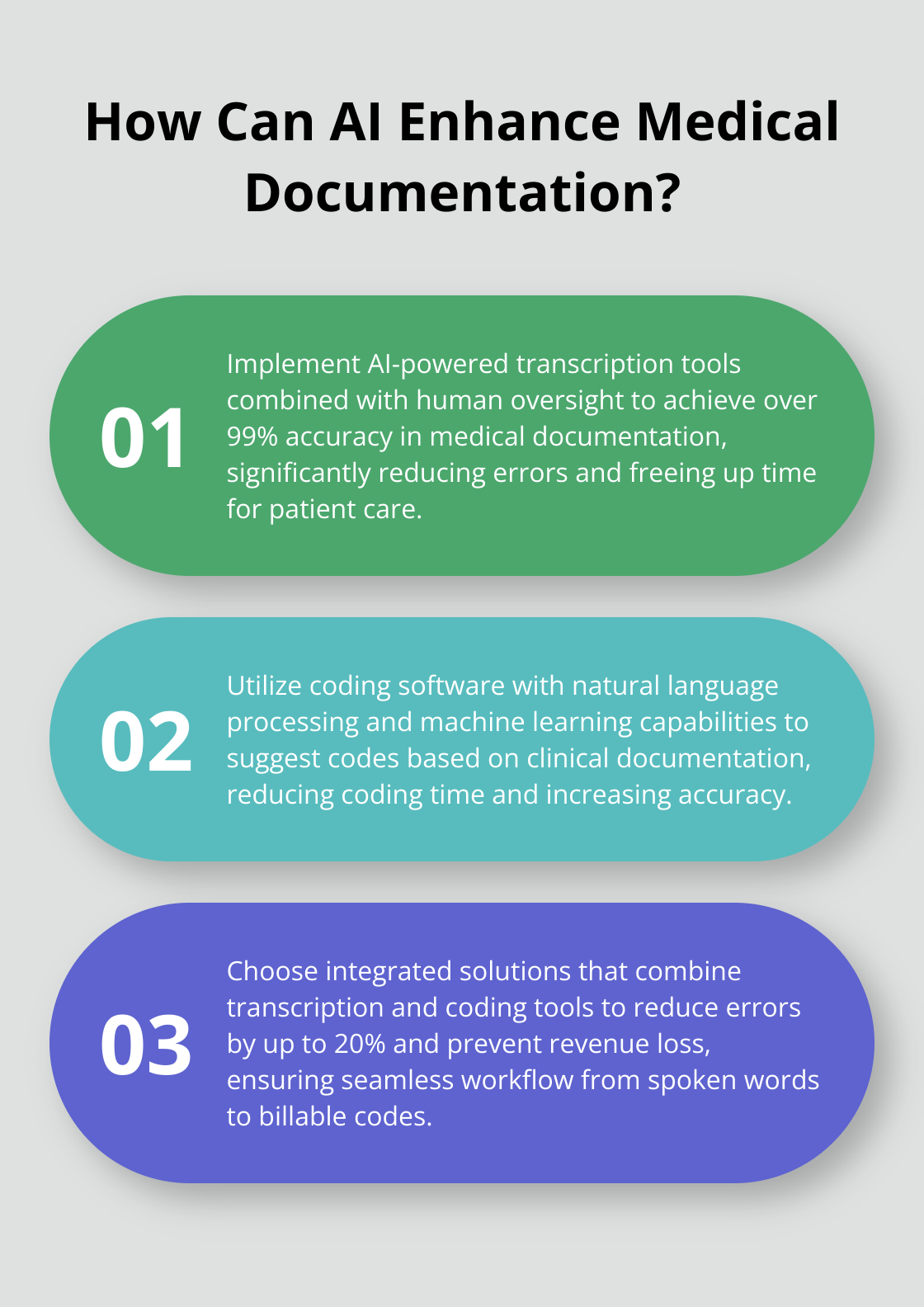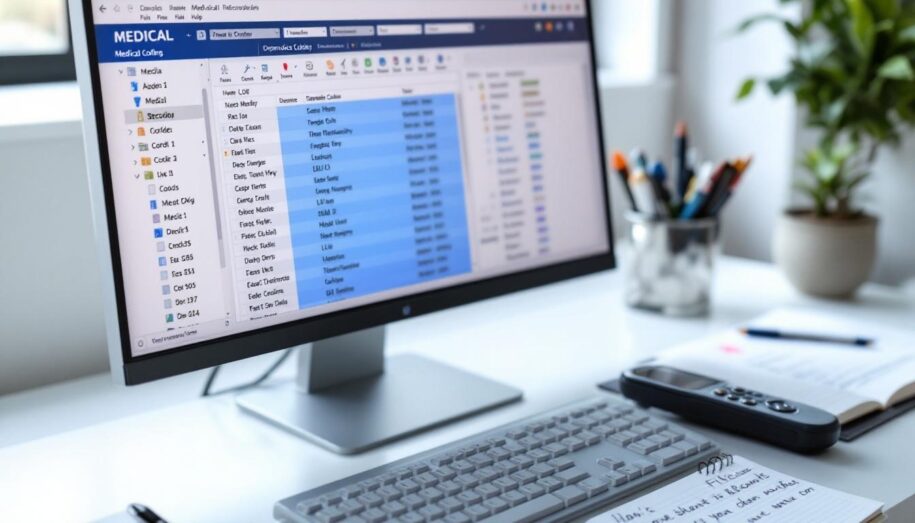Medical transcription and coding—two biggies in healthcare documentation. Yeah, they’re different, but think of them as the dynamic duo—Batman and Robin—that keep patient records in check and billing as smooth as a Sinatra ballad.
Over at ScriberJoy, we get it. The whole shtick about precise transcription is key to nailing effective medical coding. This piece? It dives into why these two are basically the peanut butter and jelly of modern healthcare admin.
What Are Medical Transcription and Coding?
Medical transcription and coding – the unsung heroes of healthcare documentation. They’re like the dynamic duo ensuring patient records are spot-on and billings don’t turn into a bureaucratic nightmare. So, let’s dig in to see what makes these processes tick and why they’re the unsung linchpins of healthcare.
Medical Transcription: From Voice to Text
Medical transcription is the art of turning doctors’ spoken words into the gospel according to medical records. It’s all about taking those patient histories, physicals, and surgery narratives – and making them readable. Transcriptionists are the conduit, listening to doctor speak and crafting it into clear, typo-free documents.

Back in the day (2016 to be exact), the Bureau of Labor Statistics said there were about 57,400 transcriptionists doing their thing in the U.S. The number might shrink a little, but don’t let that fool you – these folks are crucial for keeping healthcare documentation on point.
Medical Coding: Translating Healthcare into Universal Language
Think of medical coding as the Rosetta Stone for healthcare. Coders take medical diagnoses, treatments, and gear, then convert all that into a secret code – okay, not that secret, but standardized stuff like ICD and CPT. This mystical script is what links care to billing.
To get this right, coders need to be fluent in medical terminology, anatomy, and every nook and cranny of coding rulebooks.
The Importance of Accuracy
Let’s be real: there’s no wingin’ it here. A JAMA Network Open study says speech recognition software alone has a 7.4% error rate. But throw in a trained human transcriptionist, and you’re down to 0.4% errors. It’s a no-brainer – human verification is key.
For coding, accuracy isn’t just a nice-to-have, it’s life or death for a claim. Mess up a code and you might be facing rejections, delayed payments, or the big F – fraud. HIPAA violations can cost a pretty penny, with fines hitting up to $25,000 per violation category, per year from state attorneys general.
The Role of Technology
Tech is crashing this party too. AI-driven transcription software is joining forces with human eyes to hit the jackpot – over 99% accuracy. It’s all about closing that gap between transcription and coding.
As for coding software? It’s changing the game, making things faster, more accurate. The blending of transcription and coding tools is like streamlining the whole shebang, cutting down on errors and boosting efficiency.
Moving forward – if we know anything – it’s that transcription and coding are becoming more in sync. Nail the transcription and you’re setting the stage for coding that makes everything else, from billing to patient care, work like a charm. Buckle up, because we’ll dive deeper into how this all plays out in the next section.
How Transcription Shapes Coding Accuracy
The Transcription-Coding Pipeline
So, let’s pull back the curtain on this whole transcription and coding gig-it’s like the dynamic duo of healthcare documentation. One’s setting the stage (that’s transcription), and the other’s all about precision execution (that’s coding). And here’s the kicker, the neatness of your transcription? Yep, it decides how accurate your coding will be, which then lays the groundwork for billing and, you guessed it, reimbursement. It’s a big deal in healthcare admin.

Transcription-it’s like the bedrock beneath coding’s feet. Picture this: healthcare pros are like, dictating patient plays-by-plays, procedures, diagnoses-what have you. Then, transcriptionists swoop in like heroes, converting these audio files into shiny, written docs. Those docs? Well, they’re the goldmine from which medical coders strike out to assign just the right codes.
And guess what-according to the American Health Information Management Association (AHIMA), without accurate transcription? You might as well be throwing darts in the dark when assigning codes. Poor EHR system design and slipshod use? Recipe for chaos. Seriously, it starts with transcription, folks.
Precision: The Key to Effective Coding
Let’s face it-there’s no wiggle room on transcription accuracy if you want spot-on coding. Even a small slip-up or missed detail can throw the whole coding game off. Think about it-mixing up “hypertension” with “hypotension”? Entirely different diagnosis codes, and things can get messy real quick-affecting patient care and sending billing on a wild goose chase.
According to the Association for Healthcare Documentation Integrity (AHDI), nail the transcription game, and you slash coding errors by up to 75%. Now that’s what I call efficiency-less coding blunders, sharper medical records, smoother coding process-it’s a win-win all around.
The Impact on Billing and Reimbursement
And here’s where the ripple effect shows its true colors. Lagging behind on transcription precision? That leads straight to the kind of coding hitches that can trigger claim refusals, late payments, or-yikes-even fraud allegations.
The Healthcare Financial Management Association (HFMA) sheds light on this, pointing out that hospitals lose roughly 3% of possible revenue-all because of coding slip-ups from shabby documentation. And when we say millions lost each year, we truly mean it. This is not pocket change, people.
Advanced Solutions for Improved Accuracy
So, what’s the fix here? Many healthcare outfits are turning the page with new-age transcription solutions. AI-powered tools are like a breath of fresh air-cutting transcription goofs by a cool 30% compared to old-school methods. With healthcare pros jumping on board these tech trains, the game’s changing for medical documentation accuracy.
Boosting the accuracy of those medical transcripts? It’s like striking fool’s gold-including fewer coding errors, minimizing payment delays, and smoothing out revenue management via slick transcription services. The secret sauce? It’s seeing transcription not as an endgame but as a vital cog in the vast machinery of healthcare documentation.
As we roll forward, it’s evident that weaving transcription and coding tools into the cloth of healthcare documentation is crucial. The next chapter in this saga? We’ll dig into the tech marvels shaping this sphere, revolutionizing how the med crew tackles patient info. Stay tuned.
Tech Transforming Medical Documentation
AI-Powered Transcription: The New Frontier
Okay, let’s break this down. AI is basically transforming how medical transcription is done. Imagine having AI tools that boast over 99% accuracy in medical documentation. Yep, that’s a thing. Way better than the clunky 7.4% error rate you get from running an old-school speech recognition software (so says a JAMA Network Open study). In other words…it’s a game-changer.

Now, AI-powered transcription doesn’t just get the job done-fast. It’s all about speed and precision. You can forget those endless hours lost to paperwork. Instead, it frees up valuable time for healthcare providers to focus on what really matters-patient care. Combine this AI magic with good old human oversight, and you’ve got a medical documentation beast.
Coding Software: Precision at Your Fingertips
Shift gears now to coding software. It’s not just sitting around idly. With natural language processing and machine learning swooping in, coding platforms nowadays suggest codes based on clinical documentation. Imagine not wasting hours in a codebook-sounds dreamy, right? This tech shift slashes coding time and amps up the accuracy to new heights.
Case in point-systems like 3M’s 360 Encompass. You’ve got machine learning techniques jazzing up rule-based algorithms, ensuring they play nice with ever-changing regulations (because who wants to deal with HIPAA violations draining $25,000 per category each year? No one, absolutely no one).
Bridging the Gap: Integrated Solutions
Onto bigger things-integrated solutions. Think of it as the glue binding transcription and coding tools into one powerhouse. The result? Smooth sailing from spoken words to billable codes without the hiccups. This integration isn’t just for show-it cuts down errors and cranks up efficiency.
The folks at the American Health Information Management Association (AHIMA) tell us these integrated systems can chop coding errors by up to 20%. That’s serious dough on the line, given hospitals can lose about 3% of potential revenue thanks to coding mishaps tied to shoddy documentation.
The Future of Medical Documentation
Peek into the future-it’s buzzing with AI, machine learning, and integrated systems taking medical documentation by storm. These evolving wonders mean healthcare documentation gets a serious upgrade in accuracy, efficiency, and ease.
Healthcare providers have a clear mandate: get these technologies onboard, and pronto. It’s not about if you should adopt them-it’s about how fast you can weave them into your workflows.
Choosing the Right Solution
So, what to pick? When hunting for a medical documentation ally, zero in on accuracy, speed, and integration prowess. ScriberJoy shines here with its rock-solid AI-powered transcription plus human oversight combo for picture-perfect accuracy.
Make sure whatever you go for aligns with your needs-customizable features, HIPAA compliance, and top-notch support are key. A try-before-you-buy approach (ScriberJoy’s three-day trial, maybe?) gives you a real feel for how the software struts its stuff in your healthcare setting.
And don’t forget about those electronic medical records. They’re a cornerstone of modern documentation, bringing perks like supercharged treatment, razor-sharp accuracy, and streamline-friendly clinical workflows.
Wrapping Up
So, let’s talk about the unsung heroes in healthcare-medical transcription and coding. They’re the peanut butter and jelly of healthcare documentation, making sure everything runs smoothly. When transcription nails it, coding follows suit, and voila! You get accurate patient records and billing without the headache. It’s essential-get the transcription right, and your coding will be on-point, meaning smooth sailing for claims and keeping the financial wheels greased.

Now, throw in the tech revolution, and you’ve got a game-changer for medical documentation. AI tools are stepping up to the plate-offering levels of accuracy and efficiency we didn’t even dream of a decade ago. This is where the magic happens: human expertise meets machine precision (and yes, this combo is here to stay).
In the ever-shifting world of healthcare, acing medical documentation isn’t optional-it’s necessary. Enter ScriberJoy, giving you the best of both worlds with AI-powered transcription backed by human verification. Translation? Healthcare pros get to focus on what they love-caring for patients-while knowing their documentation is rock-solid and totally up to speed.

Leave a Reply
You must be logged in to post a comment.